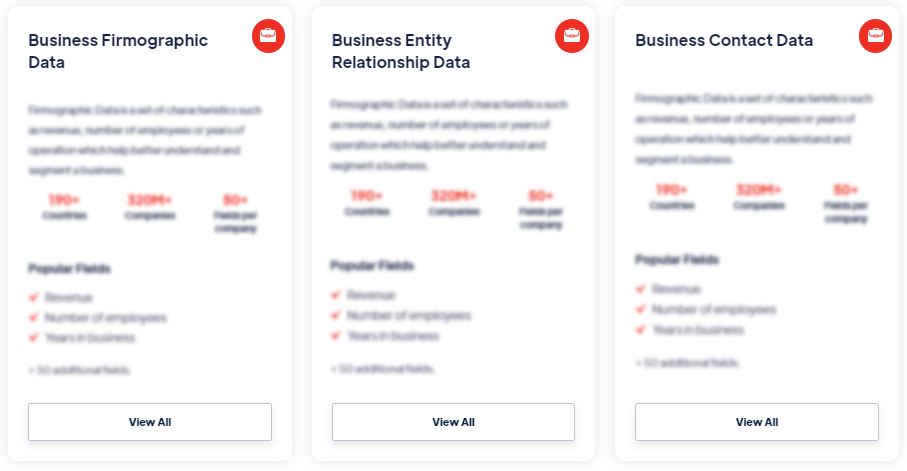Best
Wealth Data
Products
Wealth data represents the financial resources and assets owned by individuals or households. It includes various components such as cash, investments, real estate, retirement accounts, business ownership, and other tangible or intangible assets. Read more
Our Data Integrations


Request Data Sample for
Wealth Data

Browse the Data Marketplace

Frequently Asked Questions
1. What is wealth data?
Wealth data
represents the financial resources and assets owned by
individuals or households. It includes various components such
as cash, investments, real estate, retirement accounts, business
ownership, and other tangible or intangible assets.
2. Why is wealth data important?
Wealth
data is essential for understanding the economic well-being of
individuals and households, assessing income inequality,
studying wealth distribution patterns, and informing economic
policy decisions. It helps in measuring wealth gaps, identifying
wealth disparities, and evaluating the financial health of
different demographic groups.
3. How is wealth data collected?
Wealth
data is typically collected through surveys, interviews, or
administrative records. Household surveys, such as wealth or
income surveys, may ask respondents about their assets, debts,
savings, and other financial information. National statistical
agencies, financial institutions, and research organizations
also compile wealth data from various sources to provide
comprehensive insights into wealth trends and patterns.
4. What are the types of wealth data?
Wealth data can include individual-level or household-level
information. It may cover various aspects such as total net
worth, liquid assets, investments, ownership of real estate or
other properties, ownership of financial instruments (e.g.,
stocks, bonds), retirement savings, debt levels, and other
financial indicators.
5. How is wealth data analyzed?
Wealth
data analysis involves various statistical techniques and
measures to understand wealth distribution, wealth accumulation,
and wealth inequality. Key measures include median wealth, mean
wealth, wealth percentiles, Gini coefficient, and concentration
ratios. Data visualization tools and statistical software are
used to explore wealth patterns and trends.
6. What challenges exist in analyzing wealth data?
Challenges in analyzing wealth data include data quality
issues, measurement errors, non-response bias in surveys,
underreporting of certain assets or wealth components, and
difficulties in comparing wealth across different countries or
regions. Ensuring data privacy and confidentiality is also
critical due to the sensitivity of wealth information.
7. How is wealth data used in decision-making?
Wealth data informs policy decisions related to income
redistribution, taxation, social welfare programs, and financial
regulations. It helps policymakers and researchers understand
the economic well-being of different population groups, evaluate
the effectiveness of wealth redistribution policies, and design
targeted interventions to address wealth disparities and promote
economic equality.
